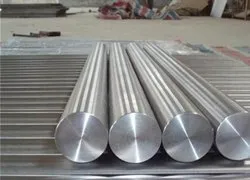Introduction
Within the realm of stainless steels, a plethora of alloys with varying compositions and properties coexist, each catering to specific needs across industries. The 410 stainless steel, known for its unique composition and characteristics, finds itself in the spotlight as we embark on a journey to discern how it compares to its stainless steel counterparts. This comprehensive article delves deep into the distinctions between 410 stainless steel and other popular stainless steel grades, shedding light on their differences, advantages, and applications.
1. Deciphering Stainless Steels: A Multifaceted Family
 The universe of stainless steels encompasses a diverse family of alloys, each with its distinct composition, properties, and applications. Within this spectrum, 410 stainless steel stands out as a martensitic alloy renowned for its hardness and strength.
The universe of stainless steels encompasses a diverse family of alloys, each with its distinct composition, properties, and applications. Within this spectrum, 410 stainless steel stands out as a martensitic alloy renowned for its hardness and strength.
2. The Signature of 410 Stainless Steel
410 stainless steel is characterized by:
- Chromium Content: 11.5% – 13.5%
- Carbon Content: 0.08% – 0.15%
- Mechanical Strength: Elevated hardness and strength due to its martensitic structure.
3. Battle of Chromium: 410 vs. 304 Stainless Steel
410 and 304 stainless steels engage in a duel of attributes:
- Corrosion Resistance: 304 stainless steel triumphs with higher chromium and nickel content, making it superior in resisting corrosion.
- Machinability: 410 stainless steel holds an edge due to its lower work hardening rate, facilitating machining.
4. Duplex Deliberation: 410 vs. 2205 Stainless Steel
The duplex alloy 2205 enters the arena:
- Corrosion Resistance: 2205 stainless steel boasts exceptional resistance to corrosion, particularly in chloride-rich environments, surpassing 410.
- Strength and Toughness: 410 stainless steel leads in terms of hardness, while 2205 exhibits higher toughness.
5. High-Temperature Tussle: 410 vs. 310 Stainless Steel
In the realm of high temperatures:
- Temperature Resistance: 310 stainless steel prevails with its superior resistance to high temperatures, making it suitable for furnace components and exhaust systems.
- Corrosion Resistance: Both alloys exhibit resistance, but 310 stainless steel excels in elevated temperatures and corrosive atmospheres.
6. Surgical Struggle: 410 vs. 316L Stainless Steel
In medical applications:
- Biocompatibility: 316L stainless steel, an austenitic alloy, outperforms 410 with its better biocompatibility, making it ideal for surgical implants.
- Mechanical Strength: 410 stainless steel scores higher in terms of hardness, making it suitable for certain surgical tools.
7. Magnetic Mysteries: 410 vs. 430 Stainless Steel
The magnetic battle:
- Magnetism: Both alloys are magnetic, but 410 stainless steel showcases higher magnetism due to its higher carbon content.
- Corrosion Resistance: 430 stainless steel edges out 410 in terms of corrosion resistance, particularly in less aggressive environments.
8. Applications and Versatility
The versatility of 410 stainless steel and its counterparts is reflected in their applications:
- 410 Stainless Steel: Cutlery, industrial components, automotive trim, aerospace parts, and architectural accents.
- Other Stainless Steels: 304 for food processing, 2205 for marine environments, 310 for high-temperature applications, 316L for medical instruments, and 430 for decorative applications.
9. Challenges and Considerations
 Selecting the right stainless steel grade involves considering various factors, such as corrosion resistance, mechanical properties, and environmental conditions. It’s essential to match the alloy with the specific application requirements.
Selecting the right stainless steel grade involves considering various factors, such as corrosion resistance, mechanical properties, and environmental conditions. It’s essential to match the alloy with the specific application requirements.
10. Frequently Asked Questions (FAQ)
Q1: Which stainless steel grade is best for corrosive environments?
A1: Stainless steel grades with higher chromium and nickel content, such as 316L or 2205, are better suited for corrosive environments compared to 410 stainless steel.
Q2: What makes 410 stainless steel stand out in terms of applications?
A2: 410 stainless steel’s hardness and strength make it suitable for applications requiring wear resistance and durability, such as cutlery, industrial components, and architectural accents.
Q3: Is 410 stainless steel suitable for high-temperature applications?
A3: While it can withstand moderate temperatures, 410 stainless steel is not as suitable for high-temperature applications as grades like 310 stainless steel, which excels in elevated temperature environments.
Q4: What role does carbon content play in stainless steel grades?
A4: Carbon content influences the mechanical properties and hardness of stainless steel. Higher carbon content generally leads to increased hardness.
Q5: How can I choose the right stainless steel grade for my application?
A5: Consider factors such as corrosion resistance, mechanical properties, temperature, and specific environmental conditions to select the most suitable stainless steel grade for your application.
Conclusion
The world of stainless steels is a tapestry woven with a multitude of alloys, each tailored to address specific industrial needs. As we’ve explored the comparisons between 410 stainless steel and its counterparts, we’ve unveiled the unique strengths, weaknesses, and applications of each alloy. The choice of stainless steel grade hinges on a profound understanding of these attributes, ensuring that the selected material aligns seamlessly with the demands of diverse industries and environments.
